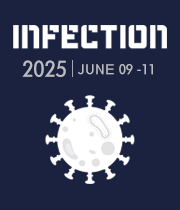Title : Don’t miss the hiss: A case of venom induced consumptive coagulopathy
Abstract:
Background: Snakebite envenoming has been recognized by the World Health Organization (WHO) as one of the highest priority neglected tropical diseases. Globally, snakebite results in a significant burden of illness, including the Philippines. Snake venom is composed of various toxins with several proteins of different compositions depending on snake genera. Envenomation presents as hemorrhage, neurotoxicity, myotoxicity, cardiotoxicity, and even shock. Clotting defects and hemolysis are characteristics of envenoming by genus Viperidae.
Case Proper: We report a 62-year-old male farmer from Quezon, Philippines who presented with persistent bleeding on his right foot after a viper bite. Work up revealed thrombocytopenia at 72 and prolonged prothrombin time (PT) at 420 seconds with INR of 32. He was treated as a case of venom-induced consumptive coagulopathy (VICC). In the absence of viper anti-venom, initial transfusion of 2 units fresh frozen plasma (FFP) was done followed by 3 additional units given every 8 hours which immediately resolved bleeding and showed coagulation recovery.
Discussion: Coagulopathy is the most important systemic clinical syndrome caused by snake envenoming in the world. VICC is characterized by the activation of the clotting pathway due to procoagulant toxins in the snake venom. Specific toxins activate various parts of the clotting pathway by targeting different clotting factors. In this case, it is caused by the consumption of coagulation factors particularly fibrinogen. A history of snakebite and evidence of coagulopathy due to factor consumption such as prolonged INR and prolonged PT are diagnostic of VICC.
The goal of treatment is prevention of major hemorrhage by neutralizing procoagulant toxins and allowing recovery of clotting factors. Although the standard of treatment is still administration of antivenom, in our local setting, replacement of clotting factors may be done instead for patients with active bleeding. This technique has shown to be effective in this case.
Conclusion: Hematologic effects of snakebite range from procoagulant coagulopathy VICC to thrombotic microangiopathy. Traditional methods such as incisions, tourniquets, and suctioning cause more harm than benefit and is not recommended as first aid. Only FFP has supported evidence for treatment in bleeding patients with VICC.


